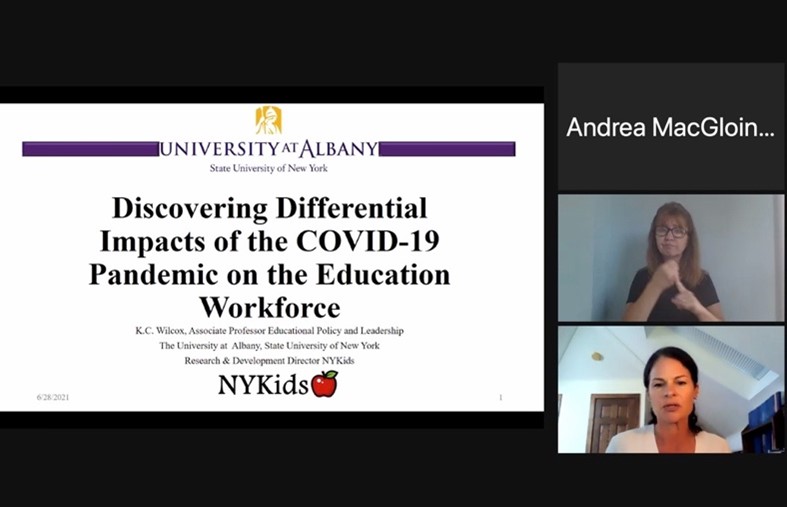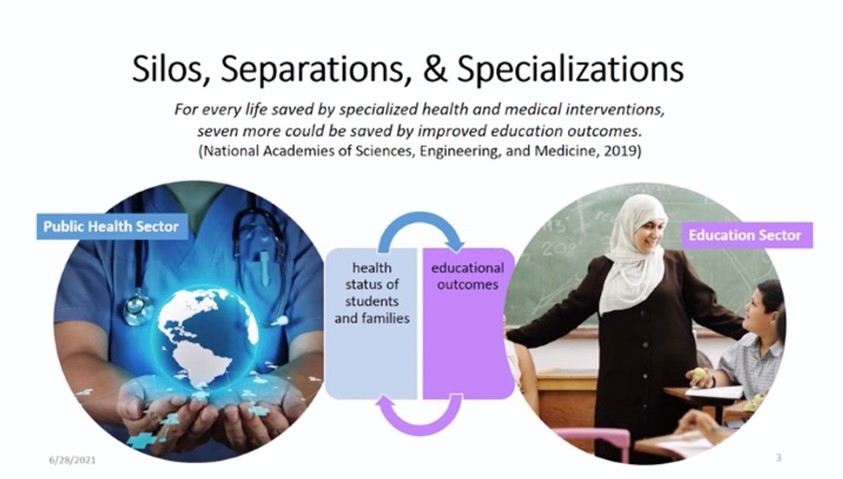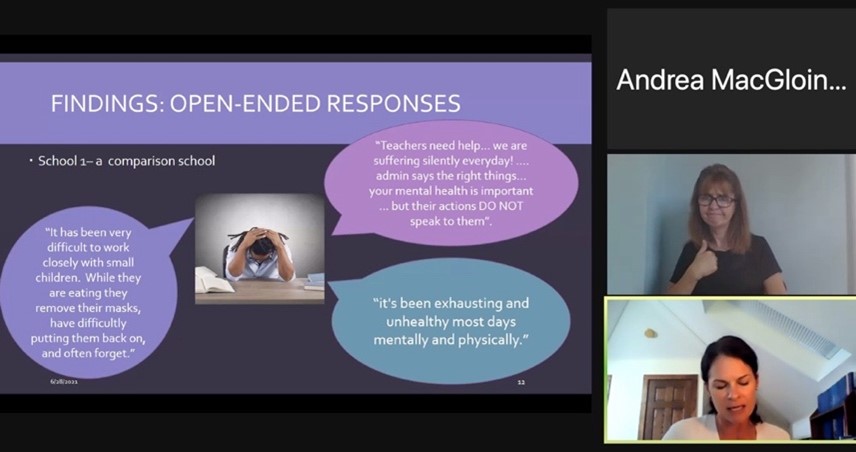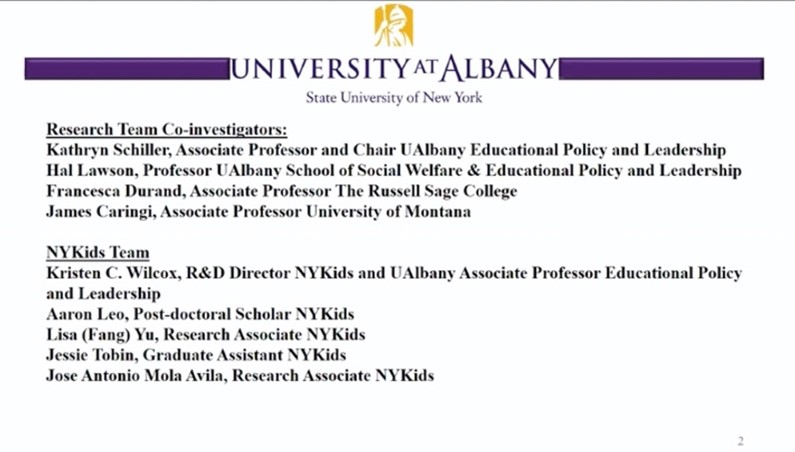Discovering Differential Impacts of the COVID-19 Pandemic on the Education Workforce
By Jessie Tobin, Kristen C. Wilcox, and Aaron Leo
 NYKids Research and Development Director and Associate Professor of Educational Policy and Leadership at the University at Albany, Dr. Kristen C. Wilcox, recently presented at the June 28 Summer Symposium: Addressing Differential impacts of COVID-19 in NYS. The symposium featured a diverse range of researchers whose current investigations are centered around health equity and disparities. Dr. Wilcox shared insights from NYKids’ COVID-19 educator response study in a presentation titled, “Discovering Differential Impacts of the COVID-19 Pandemic on the Education Workforce.” In this blog we provide highlights from NYKids’ presentation which detailed some of our preliminary findings on the ways in which the disruptions of the pandemic have disproportionately impacted the personal and professional lives of school staff.
NYKids Research and Development Director and Associate Professor of Educational Policy and Leadership at the University at Albany, Dr. Kristen C. Wilcox, recently presented at the June 28 Summer Symposium: Addressing Differential impacts of COVID-19 in NYS. The symposium featured a diverse range of researchers whose current investigations are centered around health equity and disparities. Dr. Wilcox shared insights from NYKids’ COVID-19 educator response study in a presentation titled, “Discovering Differential Impacts of the COVID-19 Pandemic on the Education Workforce.” In this blog we provide highlights from NYKids’ presentation which detailed some of our preliminary findings on the ways in which the disruptions of the pandemic have disproportionately impacted the personal and professional lives of school staff.
Background: Disruptions and Challenges
Dr. Wilcox began by recapping the tumultuous timeline of the 2020 through 2021 academic year, during which the instability of moving between remote, hybrid, and in-person learning posed unprecedented challenges for school leaders and educators.
Educators already experiencing economic and technological disadvantages due to factors such as social and/or geographical isolation were forced to carry on amid challenging circumstances. Dr. Wilcox explained that the COVID-19 pandemic prompted “significant changes in educators’ roles, responsibilities, and relationships with colleagues, students, and families”. Meanwhile, educators grappled with personal health concerns.
One goal of NYKids’ study is to understand the ways in which varying forms of stress (e.g. occupational stress and secondary traumatic stress) affect educators’ job satisfaction in relation to differing levels of economic disadvantages in schools.
Economic Disadvantage and Upticks in Job Dissatisfaction
- Prior to school closings in March 2020, there were generally no significant differences found in job satisfaction among educators in schools with lower, middle range, or higher levels of economically disadvantaged students.
- However, by March 2021, educator job dissatisfaction increased from the prior year, and educators in schools with greater levels of economically disadvantaged students reported the greatest likelihood of leaving their jobs.

After analyzing the survey data, the NYKids’ research team identified positive outlier schools (schools with relatively low job dissatisfaction) and comparison schools, and further examined these schools’ open-ended survey responses.
Educators’ Job Dissatisfaction and Adverse School-Community Dynamics
 “I feel fortunate that my building level supervisor and district level supervisors have been supportive and willing to listen to the concerns of their staff and make adjustments as appropriate.”
“I feel fortunate that my building level supervisor and district level supervisors have been supportive and willing to listen to the concerns of their staff and make adjustments as appropriate.”
(educator from school with less job dissatisfaction)
“It’s been exhausting and unhealthy most days mentally and physically.”
(educator from school with more job dissatisfaction)
Dr. Wilcox described findings around educators’ job dissatisfaction based upon open-ended survey responses in schools with less and more job dissatisfaction. The main take-away was that educators indicating more job dissatisfaction or intent to leave the profession spoke of adverse school-community dynamics as well as negatively affected relationships with students and their families during the pandemic.
 This research is still ongoing but holds important implications for policy and leadership preparation moving forward.
This research is still ongoing but holds important implications for policy and leadership preparation moving forward.
Click here to view our full presentation from the 2021 Summer Symposium. Additionally, you can find tools to help mitigate educator stress via our resources page.
As always, thank you for your interest in our research and we welcome you to reach out with any comments or questions, or to request direct support for planning for reopening in the fall at nykids@albany.edu.
